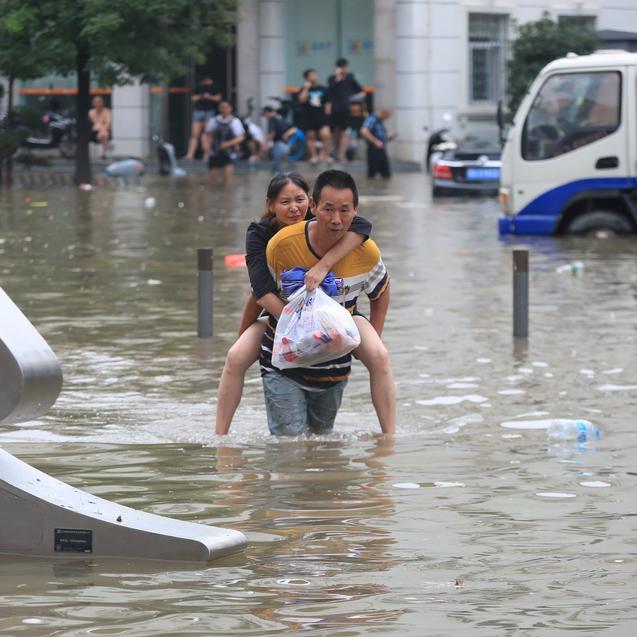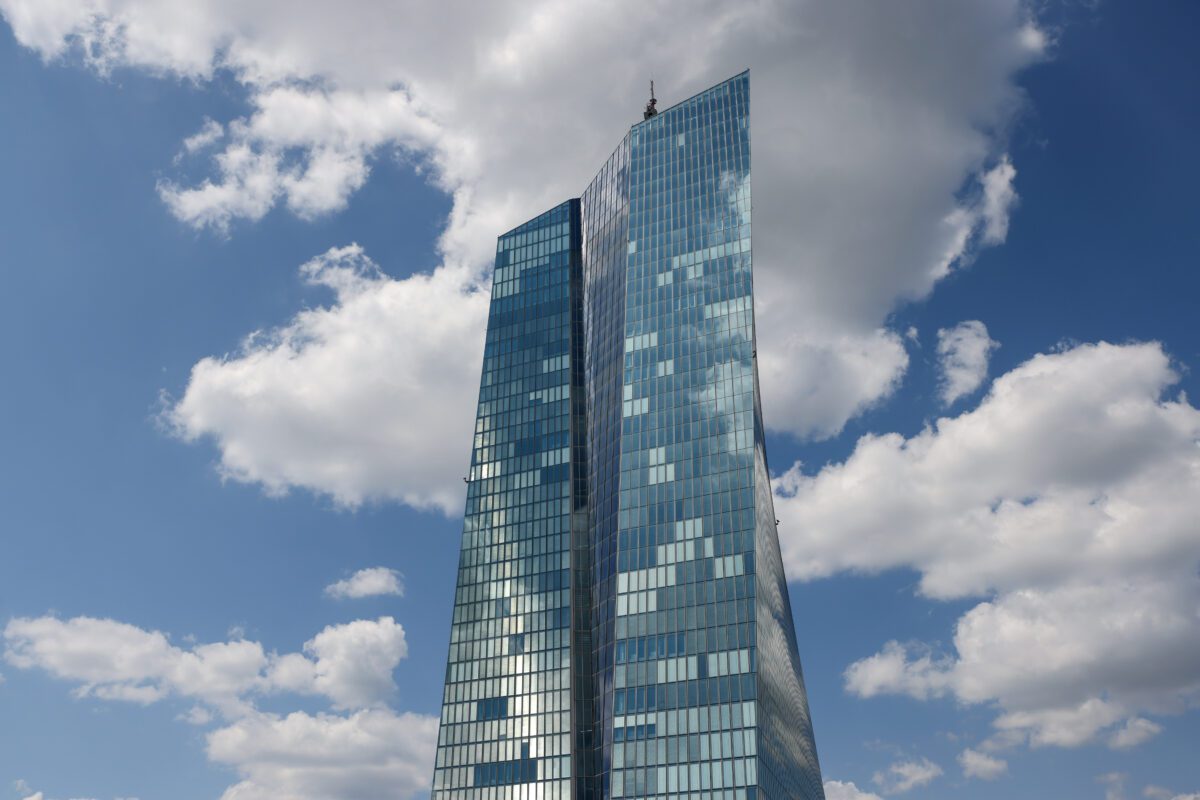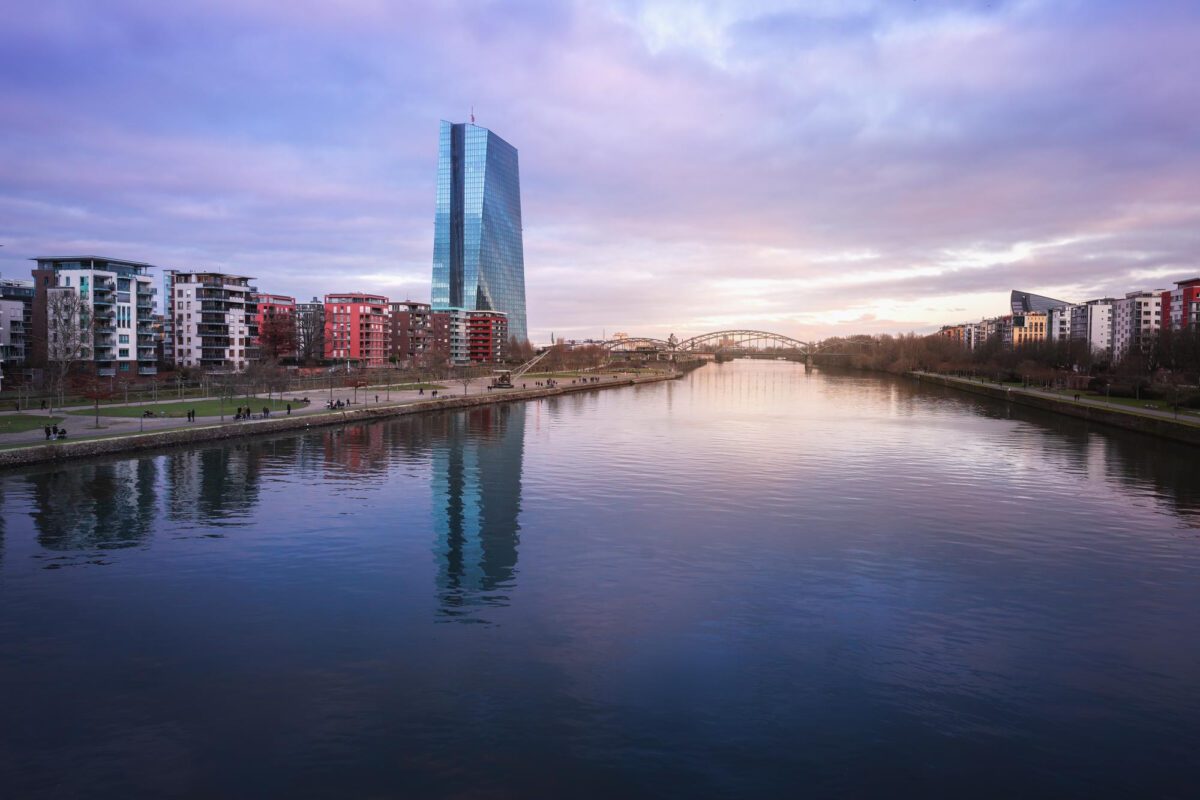FMW-Redaktion
Der IWF hat seinen aktuellsten Bericht über China vor Kurzem veröffentlicht. Das Interessante sind gar nicht mal so sehr die Prognosen oder allgemeinen Aussagen, sondern die Tatsache, dass der IWF die offiziellen Daten der chinesischen Regierung anscheinend unwidersprochen als Tatschen annimmt, und somit legitimiert. Gut, jetzt könnte man ähnliche Kritik auch über viele westliche Staaten äußern, aber immer noch zu diskutieren über chinesische Wachstumsraten von 6% oder 7%, ist abenteuerlich. So sagt der IWF ab 2020 werde das jährliche Wachstum Chinas unter 6% fallen. Damit ist es offiziell: Chinas jährliche Traumzahlen von bisher weit über 6% Wachstum müssen stimmen – denn immerhin bestätigt der IWF diese Zahlen ja in seinem Report.
Doch schaut man sich vor allem die drastischen Rückgänge bei Im- und Exporten an (hier mehr Details), wie auch vergleichbare deutschen Daten zum Außenhandel mit China, belegen sie drastische Rückgänge auf Jahresbasis. Wie kann dann eine exportlastige Volkswirtschaft wie China so stark wachsen? Unmöglich. China müsse entschieden handeln um seine Wirtschaft zu unterstützen, so der IWF weiter. „Entschieden handeln?“ Was hat China nicht alles in den letzten 12 Monaten gemacht? Wenn die KP in Peking noch mehr „unterstützt“, kann man auch gleich die totale Staatswirtschaft ausrufen. Eigentlich verlangt der IWF von der KP die Lösung aller Probleme auf einmal – so sollten doch bitte nicht nur die Banken ihre Kapitaldecke aufstocken. Nein, auch müsste die Volkswirtschaft ihre Abhängigkeit von Krediten und staatlichen Investitionen verringern. Häääh? Hat der IWF nicht auch gesagt der Staat solle die Wirtschaft kräftig unterstützten?
Der IWF sieht für China in 2016 ein BIP-Wachstum von „nur noch“ 6,6%, in 2017 noch 6,2, und dann ab 2020 wie gesagt unter 6%. Setzt man diese Sensations-Wachstumsraten in Relation zu den westlichen Daten, dürfte es seitens des IWF eigentlich nicht die geringsten Kritikpunkte an China geben! Interessant: Lauf IWF wurden die Hälfte der von chinesischen Banken vergebenen Unternehmenskredite an staatliche Unternehmen vergeben – diese würden aber nur 1/5 der Produktion repräsentieren. Also Verschuldung bei staatlichen Unternehmen, die nicht mehr gesund ist? Der IWF fordert einen Finanzierungsstop für solch schwache Unternehmen. Aber was würde das bedeuten? Das wacklige Kartenhaus würde dann erst so richtig ins Wackeln kommen. Noch mehr Arbeitslose, abgeschriebene Kredite in gigantischem Ausmaß. Da ist es vermeintlich doch besser das System mit noch mehr Anschlusskrediten am Laufen zu halten.
Denn wie sagt der IWF in der selben Analyse? Die KP muss die Wirtschaft kräftig unterstützen! Die Schließung von überschuldeten und schwachen Staatsbetrieben passt da eigentlich nicht ins Bild. Fazit: Der IWF scheint selbst nicht zu wissen was er für China will. Irgendwie soll alles besser werden. Auszug aus dem IWF-Originaltext:
–
–
Overall, the pace of reform has been strong. Reforms have advanced impressively across a wide domain. Indeed, just keeping up with the myriad of reforms on an almost daily basis is a challenge for us. Over the last 12 months, the authorities have undertaken key reforms, including: (1) making the monetary framework more modern and market based, including a more flexible exchange rate regime (2) improving the fiscal structure, for example, extending the VAT to all services and a new budget law to improve local government financial transparency, and (3) encouraging urbanization, for example by improving rural land rights, making pensions more portable, and developing new urban registration systems so migrants can gradually qualify for basic social welfare and residency benefits.
However, progress has also been uneven. It was slower on some key areas, such as strengthening corporate governance, preventing weak state-owned firms from borrowing more, tackling excessive corporate debt, and opening up state-dominated service sectors. As a result, this worsens resource allocation, weakens longer-term growth prospects and raises vulnerabilities.
The short-term risks are low probability and relate more to a potential loss of investor confidence, renewed capital outflow pressures, disorderly corporate defaults, and a sharp fall in asset prices, which could be amplified by the increasingly large, interconnected and opaque financial system. For the medium-term, the main risk is slow progress on reform and continued reliance on policy stimulus and credit to achieve growth targets. While this would support near-term growth, medium-term growth prospects would fall as productivity weakens, and risks rise, as credit and debt keep building up.
Let’s not forget that there are upside risks too. In the near-term, the recent stimulus measures may have a longer-lasting impact but, more importantly, faster progress on structural reform and curbing credit growth would significantly lift medium-term growth prospects and reduce downside risks.
Kommentare lesen und schreiben, hier klicken













Im Gegensatz zu Deutschland investiert China massiv in die Infrastrukturen. Allein in den 30 Provinzhaupstädten und 20 weiteren wichtigen Wirtschaftsstandorten werden zeitgleich neue U-Bahnlinien, Straßenbrücken und Autobahnen neu erschaffen. In Peking soll innerhalb von vier Jahren der größte Flughafen der Welt entstehen. Gleichzeitig werden die Hochgeschwindigkeitsstrecken deutlich erweitert. Man soll sich eher die Frage stellen, woher kommt das Wirtschaftswachstum in Deutschland, wenn man nicht einmal schafft einen Flughafen und einen Bahnhof fertigzustellen? Sind wir schlechter geworden als unsere Vorfahren? Aber dann können die Zahlen doch nicht stimmen, oder?
„Don’t Take The Public For Fools!“: China Hides Millions Of Layoffs, Jails Miners Protesting Unpaid Wages
(in Google pictures Hegang)
Tyler Durden’s picture
by Tyler Durden
Mar 20, 2016 10:14 AM
296
SHARES
TwitterFacebookReddit
When you look out across markets and across the increasingly fraught geopolitical landscape, there are plenty of black swans waiting in the wings (no pun intended). And quite a few of them are Chinese.
China has, among other problems: a massive debt overhang that, all told, amounts to more than 250% of GDP; a decelerating economy that Beijing swears will be able to pull off a miracle and move away from the smokestack and away from export-led growth without slipping into recession; a currency crisis; a new property bubble in Tier-1 cities; and a burgeoning NPL problem in the banking sector.
All of those issues are of course inextricably bound up with one another. They are set like dominoes and once the first one tips, the rest will too as sure as night follows day.
And while twin crises (financial and economic) in China would wreak havoc on markets in both EM and DM – between which China exists in a sort of limbo – the real question is this: what would the consequences be for societal stability in China? That is, if it all falls down, will social upheaval ensue leading to a revolt against the Politburo?
That’s not some attempt to use hyperbole on the way to positing some anarchic future for the world’s engine of global growth and trade. In fact, the possibility for widespread unrest is so real that Chinese officials have begun to address it frequently in discussions of how they plan to deal with the mass layoffs that are bound to result from Beijing’s efforts to restructure the country’s collection of elephantine SOEs and stamp out excess capacity.
After Li Xinchuang, head of China Metallurgical Industry Planning and Research Institute told Xinhua that eliminating excess capacity in the steel industry will cost 400,000 jobs and could fuel “social instability”, the government went into spin mode. National Development and Reform Commission Chairman Xu Shaoshi said in February that Beijing’s attempts to curb overcapacity will increase unemployment in provinces with high output of steel and coal but will not cause social unrest. Similarly, Xiao Yaqing, who oversees the government commission that looks after state assets, said last weekthat the country won’t experience a wave of layoffs as a result of SOE restructuring.
But the cracks are already starting to show.
As we reported on Monday, thousands of miners in China’s coal-rich (or poor depending on one’s perspective) north have gone on strike over months of unpaid wages and fears that government calls to restructure their state-owned employer will lead to mass layoffs. AsAFP noted, protesters were marching through the streets of Shuangyashan city in Heilongjiang province, venting their frustration at Longmay Mining Holding Group, the biggest coal firm in northeast China.
Speaking of Longmay, the company is laying off 100,000 workers and in a sign of things to come, around a quarter of them have been reassigned to the agriculture, timber and public service industries.
While that’s good news for the unemployment rate, it’s bad news for workers. Why? Because those jobs pay around a third (or less) of what mining jobs pay.
„(Changing professions) is not easy,“ a miner who left Longmay last yeartold Reuters. „All those who are changing professions went to work in sanitation or logging,“ for less money, he added. Here’s more:
And that means you can kiss the dream of a successful transition to a consumption and services-led economy goodbye. Or, as we put it exactly a week ago: It would be a small (actually scratch that, a „very large“) miracle if Beijing is able to restructure the economy’s collection of elephantine SOEs without creating an employment crisis. And if, as Zhou says, China intends to depend on domestic consumption rather than exports to fuel growth, then the PBoC had better get to explaining how exactly it is that hundreds of thousands of recently jobless factory workers are going to be able to be power the hoped-for but still nascent transformation.
„The average annual wage in mining in 2014 was 61,677 yuan ($9,542), compared with 28,356 yuan in farming and forestry, according to official data. Textile workers moving to restaurant and retail jobs can expect to earn around 37,264 yuan, a drop from the 51,369 yuan average pay in manufacturing,“ Reuters continues. „In Shuangyashan and nearby Hegang, the consumption-driven economy looks a distant goal.“
Clearly, handing someone a mop and a 66% pay cut isn’t going to be a viable solution for the millions upon millions who are about to be jobless in China. And we don’t just mean „viable“ in terms of the read through for China’s hoped-for transition away from investment-led growth. We mean „viable“ in terms of fending off a popular revolt.
But if the masses do rise up, don’t expect the Politburo to go down without a fight. In fact, Beijing is already taking steps to discourage public displays of disaffection. On Wednesday, in the country’s southwest, eight construction workers tied to a protest held in Langzhong last August were subjected to a 1950’s-style public sentencing. Their crime: protesting unpaid wages. Their charge: obstructing official business. The verdict: guilty.
„Many Chinese recoiled from the humiliation of pitiable migrant workers in a much-reviled and largely disused judicial practice,“ WSJ wrote, earlier this week. „Legal experts, journalists and laymen alike launched into caustic criticism of the Langzhong court, calling its rally barbaric and an egregious violation of due process.“
Right. And that’s the whole point. Because if you give angry workers the idea that they can protest without suffering severe consequences, well then you might just have yourself a whole lot of protests once the layoffs begin in earnest. The workers shown flanked by police below will be spending the next six to eight months in jail.
Of course when people can’t feed their families they stop worrying about public shaming and even forget about the threat of prison. Which is why China will ultimately be unable to contain the public’s collective anger when the proverbial rubber hits the road.
The local government said the public sentencing was an effort to „to educate the public on how to lawfully protect their rights.“
The response from one Weibo user: „Don’t take the public for fools. You think the people don’t understand your purpose in using public sentencing?“
The Party had better figure something out quick. Because while you can make an example out of a handful of construction workers, and while you can „disappear“ dissident journalists, the only thing you can do when millions of furious Chinese descend on Zhongnanhai is start shooting.